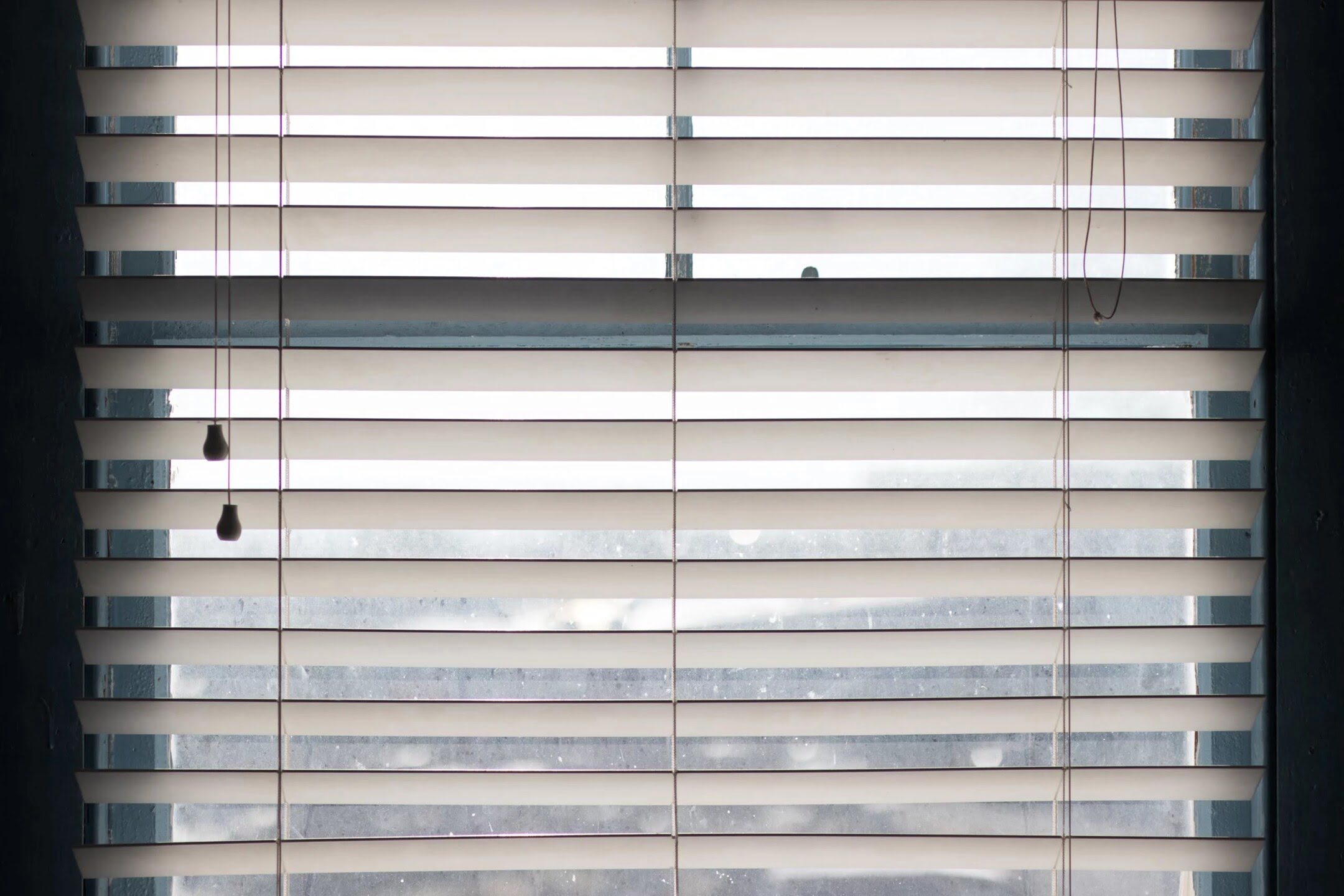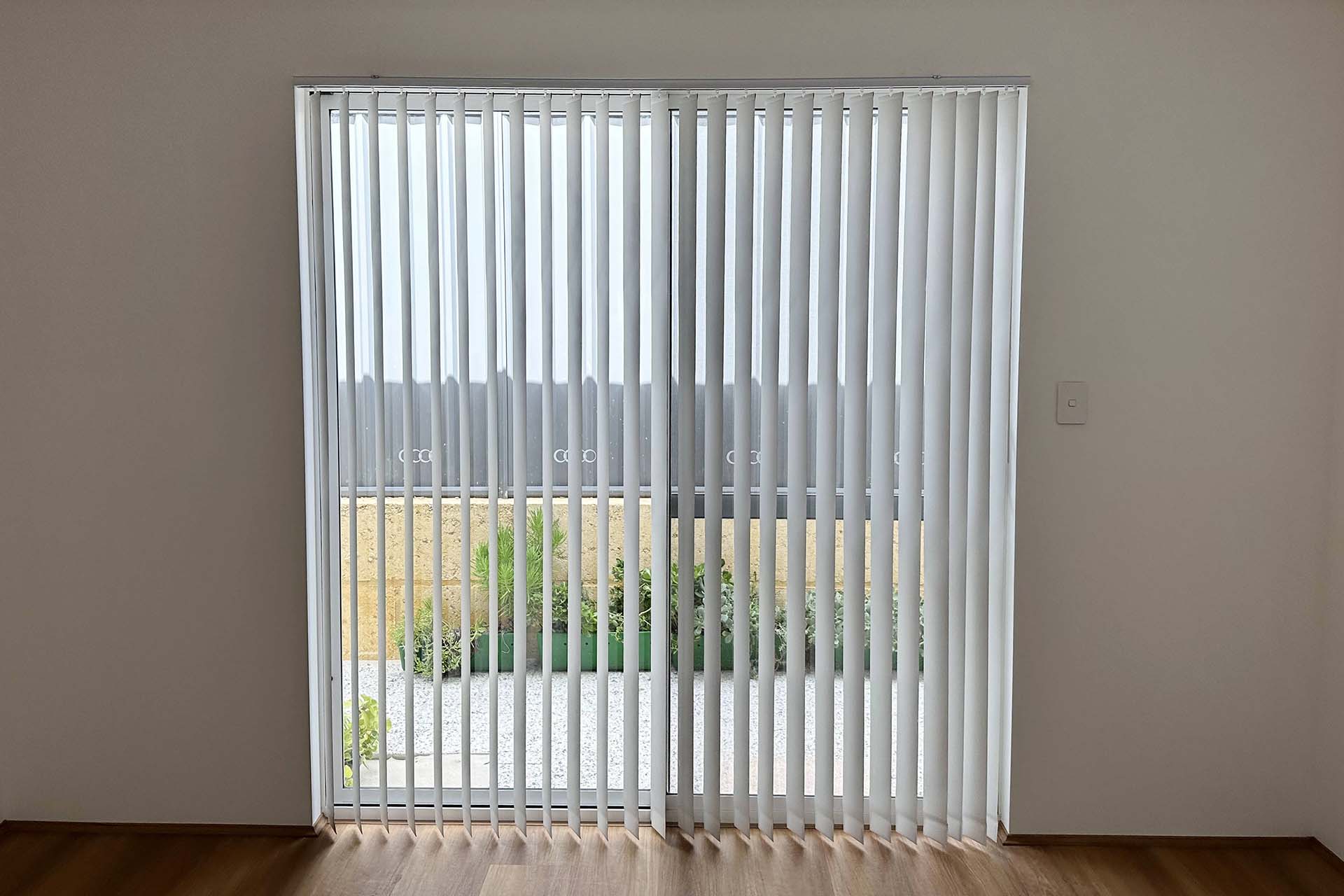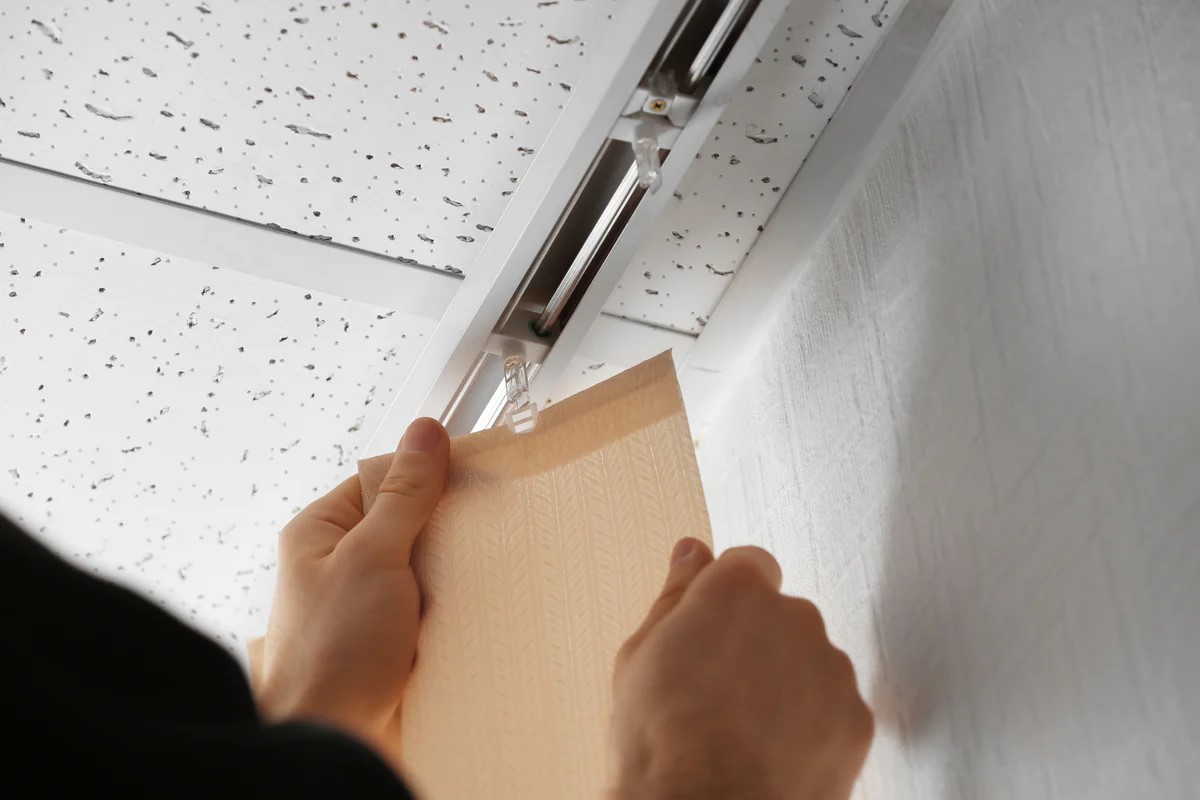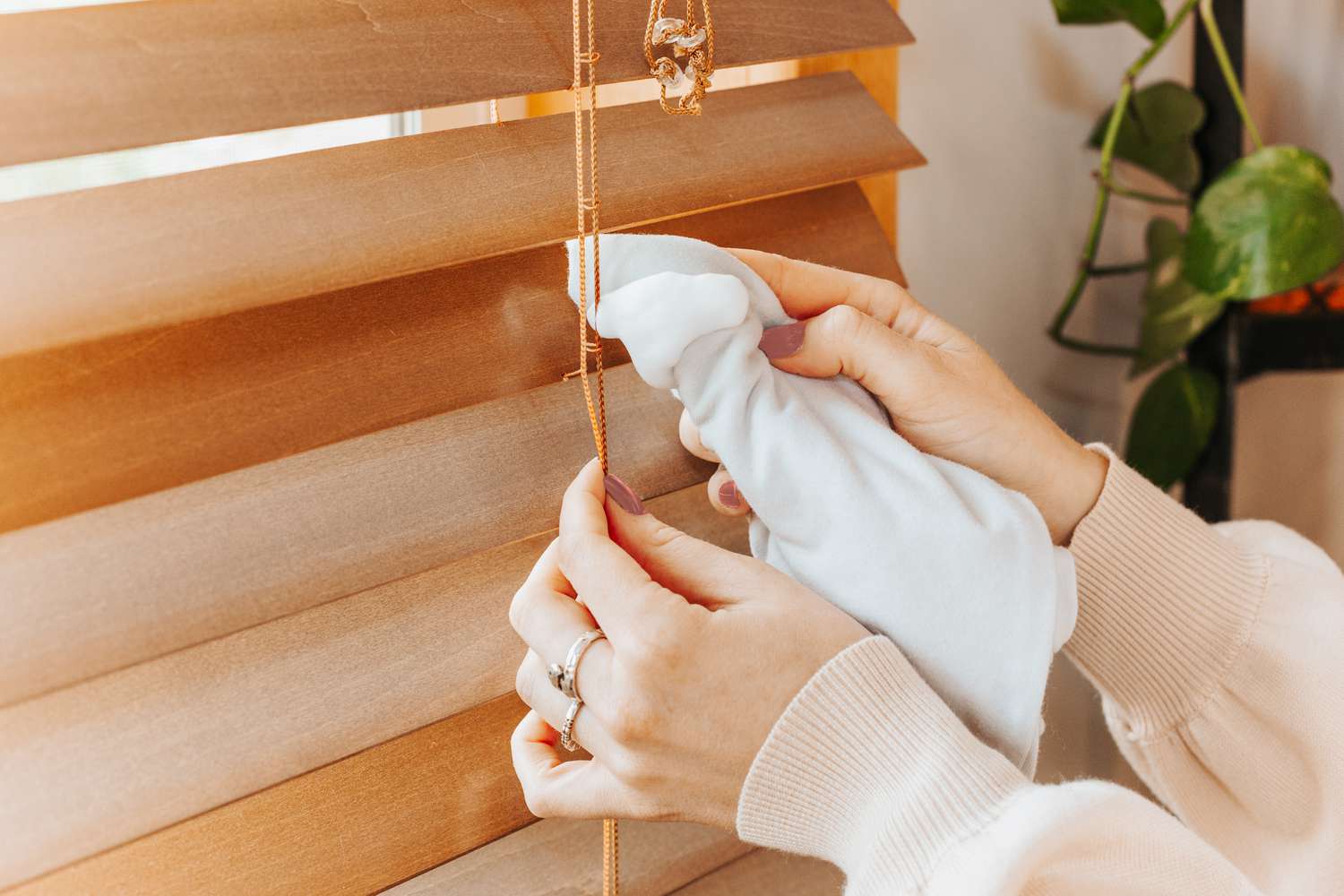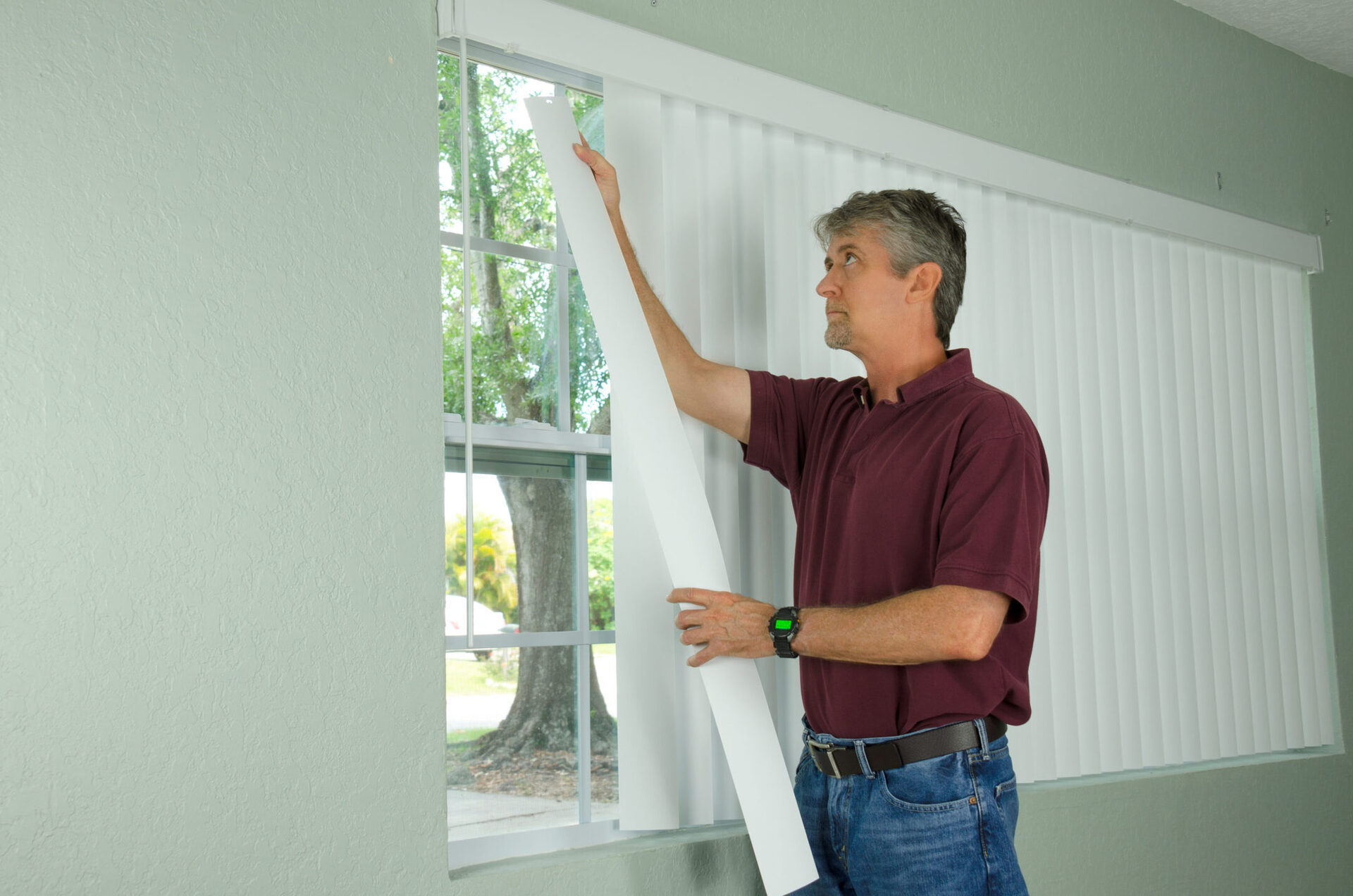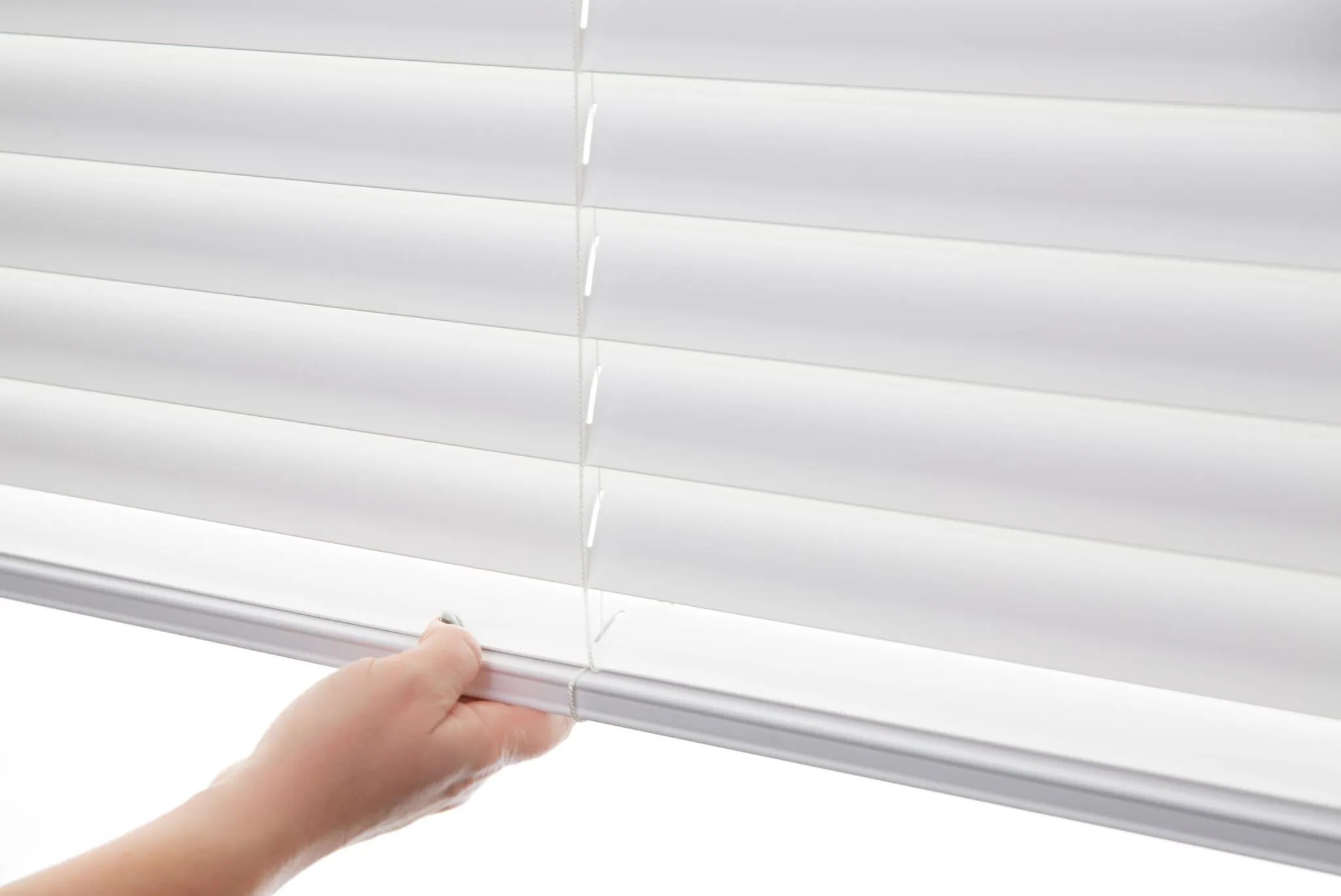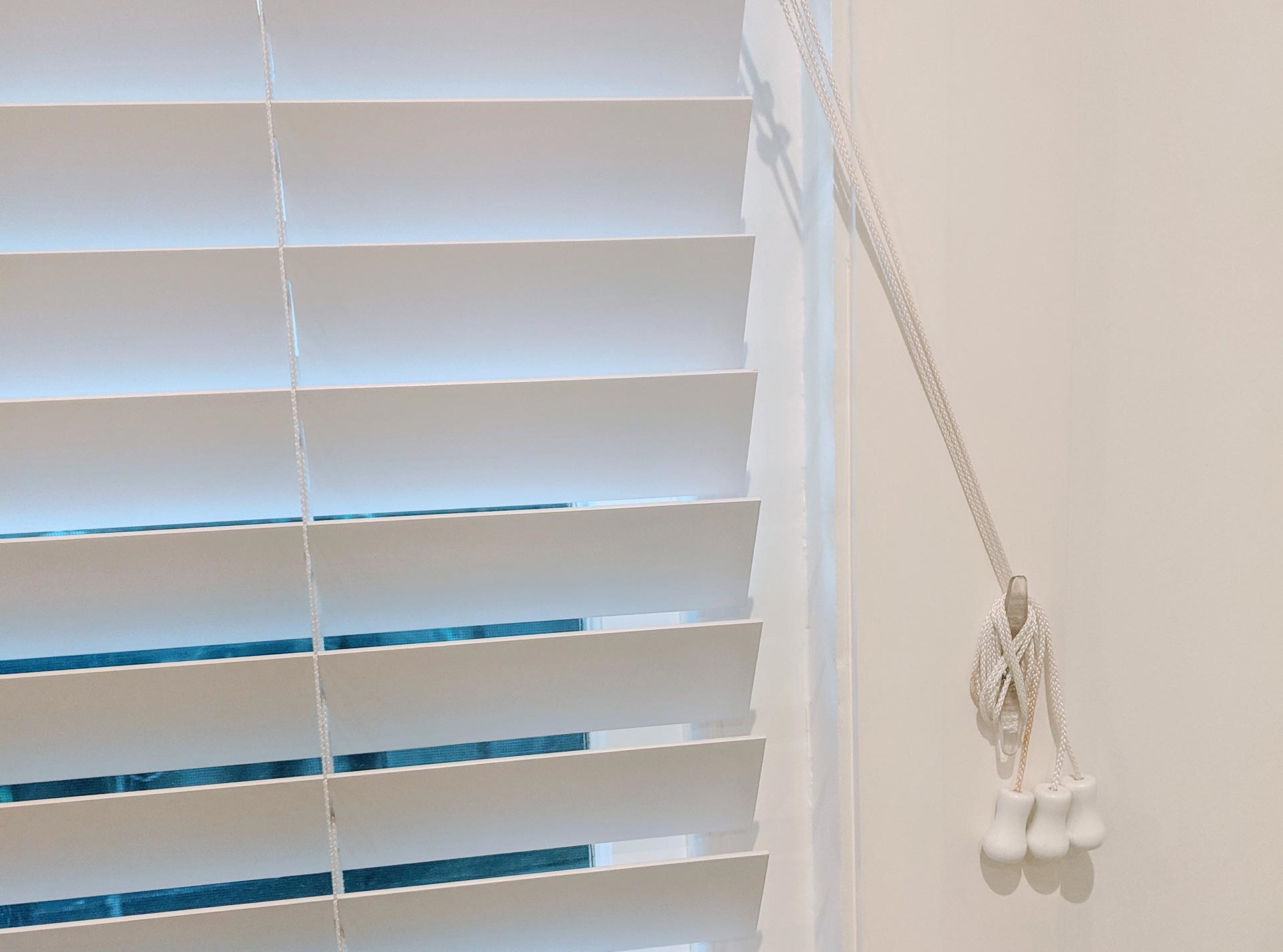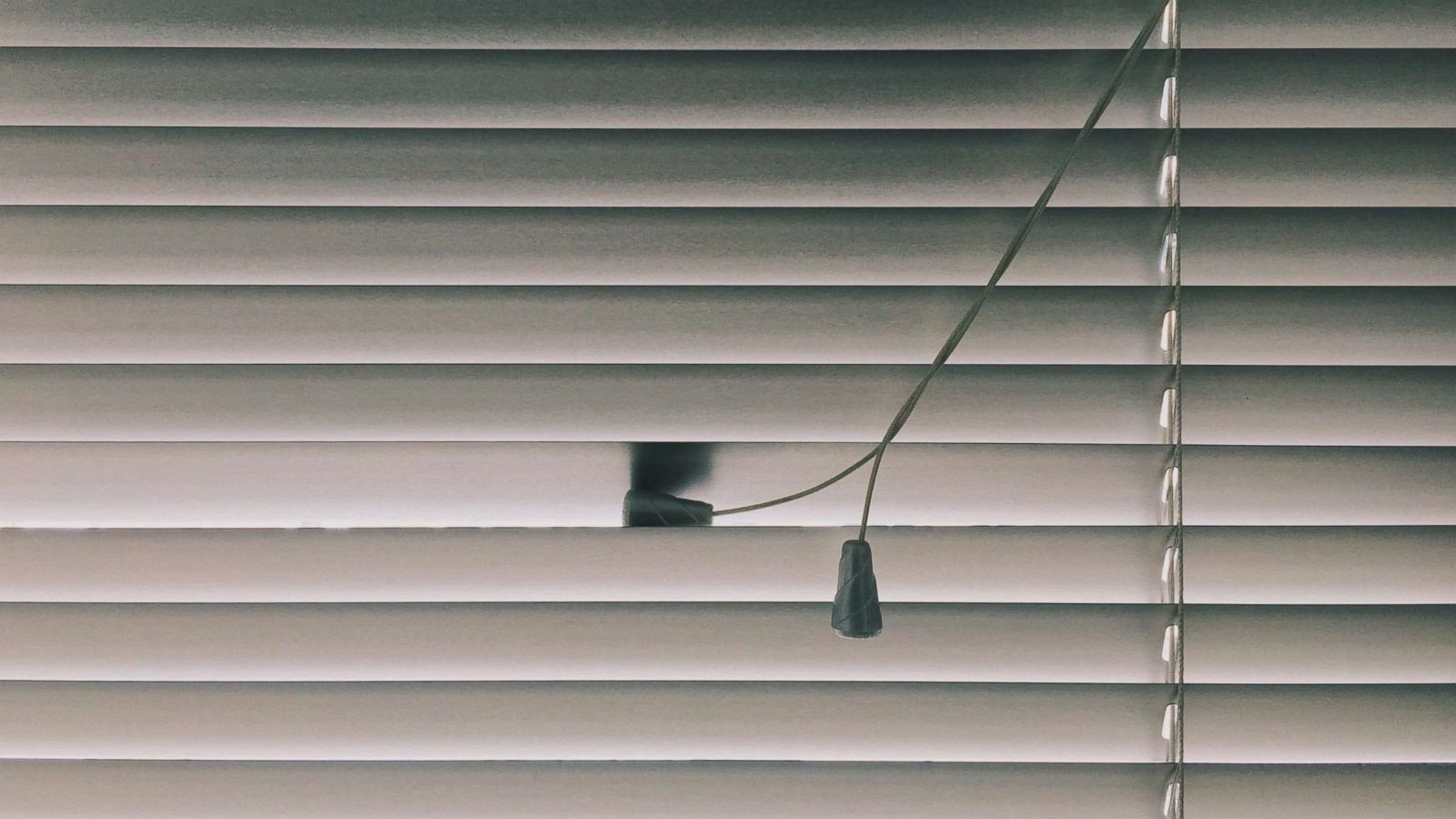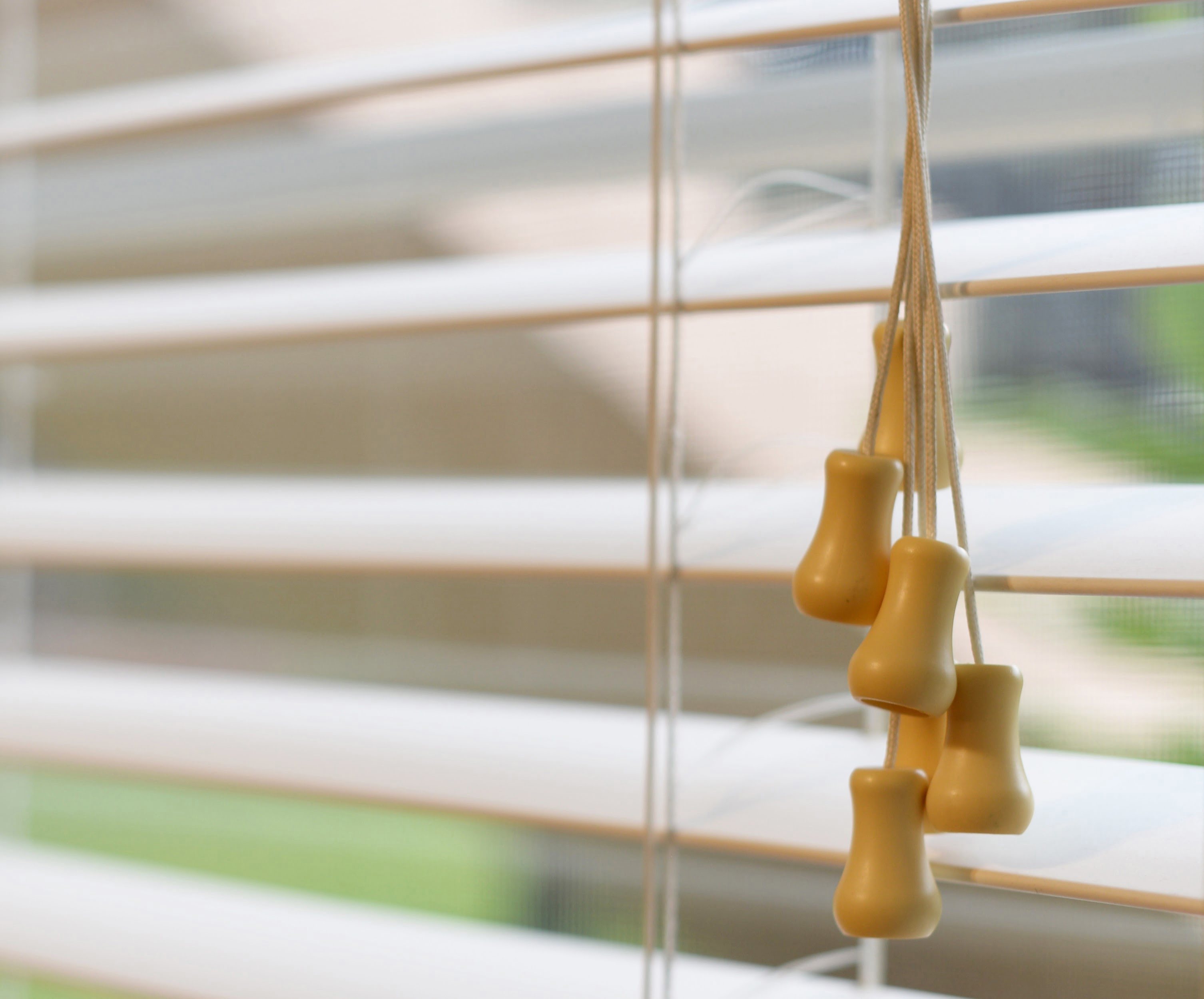

Articles
How To Fix Vertical Blinds String
Modified: August 17, 2024
Looking for articles on how to fix vertical blinds string? Find step-by-step guides and expert tips to repair your blinds and get them working like new again.
(Many of the links in this article redirect to a specific reviewed product. Your purchase of these products through affiliate links helps to generate commission for Storables.com, at no extra cost. Learn more)
Introduction
Vertical blinds are a popular window covering option due to their versatility and ability to control light and privacy. However, over time, the strings that hold the blinds together can become worn or break, causing the blinds to malfunction. Dealing with vertical blinds string issues can be frustrating, but with some know-how and the right tools, you can easily fix the problem yourself.
In this article, we will explore the common issues that arise with vertical blind strings, how to assess the problem, and provide you with a step-by-step guide to fix the vertical blinds string. By following these instructions, you’ll be able to restore the functionality of your blinds and extend their lifespan.
Before diving into the repair process, it’s important to highlight the significance of functioning vertical blinds and the impact they can have on your living space.
Read more: How To Fix The String On Blinds
The Importance of Functioning Vertical Blinds
Vertical blinds not only serve as a decorative element but also play a crucial role in managing light and privacy within a room. By adjusting the angle of the blinds, you can fine-tune the amount of sunlight entering your space, reducing glare and protecting your furniture and belongings from fading caused by UV rays.
Moreover, vertical blinds offer privacy by blocking the view from the outside. This feature is particularly important for spaces such as bedrooms or living rooms that face busy streets or neighbors’ windows. Ensuring that your vertical blinds are in optimal working condition allows you to control the level of privacy in your home.
Now, let’s delve into the common issues you may encounter with your vertical blind strings.
Key Takeaways:
- Maintaining functioning vertical blinds is crucial for controlling light, enhancing privacy, and adding a stylish touch to your living space. By following the step-by-step guide, you can easily fix common issues with vertical blind strings and enjoy the benefits of well-maintained blinds.
- Regular maintenance, such as dusting, cleaning, and lubricating the blind track, is essential to prevent future issues and ensure the smooth operation of your vertical blinds. With the right tools and knowledge, you can save money on professional repairs and prolong the lifespan of your blinds.
The Importance of Functioning Vertical Blinds
Vertical blinds not only serve as a decorative element, but they also play a crucial role in managing light and privacy within a room. By adjusting the angle of the blinds, you can fine-tune the amount of sunlight that enters your space, reducing glare and protecting your furniture and belongings from fading caused by harmful UV rays.
One of the key advantages of vertical blinds is their ability to direct light. By manipulating the position of the slats, you have full control over the direction and intensity of natural light entering the room. This is especially beneficial in spaces such as offices or study areas, where glare on computer screens can be a major issue. With functioning vertical blinds, you can easily adjust the slats to minimize or eliminate glare, allowing for a more comfortable and productive environment.
Vertical blinds also offer privacy by blocking the view from the outside. This is particularly important for rooms that face busy streets or neighboring properties. With properly functioning vertical blinds, you can create a secluded and private space within your home, shielding you and your family from prying eyes.
Another advantage of vertical blinds is their ability to insulate your home. The slats of the blinds act as a barrier, preventing drafts and heat loss during the colder months. Additionally, they can help to keep your home cool in the summer by blocking out excessive heat from the sun. This not only enhances your comfort but also contributes to energy efficiency and potential cost savings on heating and cooling bills.
Additionally, vertical blinds can be an integral part of your interior design. They come in a variety of materials, colors, and patterns, allowing you to select blinds that complement your existing decor and enhance the overall aesthetic of your space. By maintaining functioning vertical blinds, you can ensure that your window coverings continue to contribute positively to the overall style and ambiance of your home.
Considering the various benefits of functioning vertical blinds, it becomes evident that addressing any issues with the blinds’ strings is of utmost importance. By promptly fixing string-related problems, you can restore the full functionality of your vertical blinds and enjoy all the advantages they have to offer.
Now that we understand the significance of functioning vertical blinds, let’s move on to exploring the common issues that can occur with vertical blind strings.
Common Issues with Vertical Blind Strings
Vertical blinds consist of individual slats that are interconnected by strings. These strings allow the blinds to be easily maneuvered, enabling you to open or close them and adjust the amount of light entering your space. However, over time, these strings can develop issues that disrupt the smooth operation of the blinds. Here are some common problems you may encounter with vertical blind strings:
- Tangled or Twisted Strings: One of the most common issues with vertical blind strings is tangling or twisting. This can happen due to improper handling, excessive force applied to the strings, or general wear and tear. Tangled or twisted strings can prevent the blinds from opening or closing smoothly, causing frustration and inconvenience.
- Frayed or Damaged Strings: Vertical blind strings are prone to wear and tear over time. Constant movement and exposure to sunlight can cause the strings to become frayed or damaged. When the strings fray or break, the blinds may not function properly, making it difficult to adjust or control the light entering the room.
- Broken Cord Connectors: The vertical blind strings are connected to the track and mechanism by cord connectors. These connectors can break or become detached, causing the blinds to hang unevenly or not respond to the control mechanism. If the cord connectors are broken, the blinds may require replacement or repair to restore their functionality.
- Stuck or Jammed Strings: Sometimes, the strings of vertical blinds can get stuck or jammed. This can occur due to debris or dirt accumulating in the track or on the strings themselves. When the strings become stuck, it becomes difficult to manipulate the blinds, affecting their ability to open, close, or adjust the angle of the slats.
- Inconsistent Tension: Vertical blind strings need to have consistent tension for the blinds to operate smoothly. If the tension in the strings is uneven, the blinds may not hang straight or may not stay in the desired position when adjusting the angle of the slats. Inconsistent tension can be caused by loose or improperly installed components, such as brackets or cord connectors.
These common issues with vertical blind strings can significantly affect the functionality and appearance of your blinds. However, the good news is that most of these problems can be addressed and resolved with a few simple steps. In the next section, we will guide you through the process of assessing the problem and fixing the vertical blind strings.
Now that we are aware of the common issues that can occur with vertical blind strings, let’s move on to understanding how to assess the problem and determine the necessary steps to fix them.
Assessing the Problem
Before you can effectively fix the issues with your vertical blind strings, it’s crucial to assess the problem and identify the specific areas that require attention. This will help you determine the appropriate course of action and ensure that you address the root cause of the problem.
Here are some steps to follow when assessing the problem:
- Observe the blinds: Take a close look at your vertical blinds and carefully examine their overall condition. Are all the slats hanging straight? Do the strings appear tangled or twisted? Are there any visible signs of fraying or damage?
- Test the controls: Operate the blinds using the control mechanism (typically a chain or wand). Pay attention to how the blinds respond. Do they open and close smoothly? Are there any issues with adjusting the angle of the slats?
- Inspect the cord connectors: Examine the cord connectors that attach the strings to the track and mechanism of the blinds. Check for any signs of breakage, detachment, or other damage.
- Check for obstructions: Look for any obstructions or debris in the track of the blinds or on the strings themselves. Remove any dirt, dust, or debris that may be preventing the smooth operation of the blinds.
- Assess the tension: Pay attention to the tension of the vertical blind strings. Are they evenly tensioned, or do some strings feel loose while others feel tight?
By thoroughly assessing the problem, you will have a clearer understanding of the specific issues affecting your vertical blind strings. This will help you determine the necessary steps and gather the appropriate tools and materials for the repair process.
In the next section, we will outline the tools and materials you will need to fix the vertical blind strings effectively.
Now that we have assessed the problem, let’s move on to understanding the tools and materials you will need to fix the vertical blind strings.
Read more: What Is Vertical Blinds
Tools and Materials Needed
Before you begin repairing your vertical blind strings, it’s important to gather the necessary tools and materials. Having everything you need on hand will ensure a smooth and efficient repair process. Here’s a list of the tools and materials you’ll need:
Tools:
- Scissors or wire cutters: These will be used to trim or cut the vertical blind strings as needed.
- Pliers: Pliers can come in handy for gripping and manipulating the strings or cord connectors.
- Screwdriver: A screwdriver may be needed to remove any screws or fasteners that hold the blind track in place.
- Needle and thread: If you need to repair any frayed or damaged strings, a needle and thread will be useful.
- Cord pull tool or safety pin: This tool can be helpful for re-threading the vertical blind cord through the slats.
Materials:
- Replacement string: If your vertical blind strings are severely damaged or broken, you may need to replace them. Ensure that you have the correct length and thickness of replacement string.
- Cord connectors: If the cord connectors on your blinds are broken or detached, you will need to replace them. Make sure to purchase the appropriate size and type of cord connectors for your blinds.
- Replacement slats: If any of your vertical blind slats are broken or damaged, you may consider replacing them to improve the appearance and functionality of your blinds. Measure the length and width of the existing slats to ensure you purchase the correct size and style.
Once you have gathered all the necessary tools and materials, you’ll be ready to start fixing your vertical blind strings. In the following sections, we will provide you with a step-by-step guide to help you through the repair process.
Now that we have the tools and materials ready, let’s dive into the step-by-step guide for fixing the vertical blind strings.
Step-by-Step Guide to Fixing Vertical Blind Strings
Fixing the vertical blind strings may seem daunting, but with the right approach and a step-by-step process, you can easily restore the functionality of your blinds. Follow these instructions to guide you through the repair process:
1. Removing the Blinds from the Track:
- Carefully remove the blinds from the track by unhooking them or sliding them out.
- Place the blinds on a clean and flat surface, ensuring that they are easily accessible for repair.
2. Replacing Broken or Damaged Vertical Blind Slats:
- If any of the slats are broken or damaged, remove them by unhooking them from the string connectors at the top and bottom.
- Measure the length and width of the existing slats and purchase replacement slats of the same size and style.
- Attach the new slats to the string connectors, ensuring they are evenly spaced and aligned.
3. Reattaching or Replacing the Cord Connector:
- If the cord connector is broken or detached, remove the old connector by unscrewing or unhooking it from the blind mechanism.
- Replace it with a new cord connector of the appropriate size and type, making sure it is securely attached.
4. Re-threading the Vertical Blind Cord:
- If the vertical blind cord has come loose or needs to be replaced, carefully remove the old cord from the slats.
- Using a cord pull tool or a safety pin, thread the new cord through the holes in the slats, making sure it is evenly distributed.
5. Adjusting the Tension in the Cord:
- Once the cord is threaded through the slats, adjust the tension to ensure that the blinds hang evenly and smoothly.
- If necessary, use pliers to tighten or loosen the tension in the cord until it is balanced.
6. Testing and Reinstalling the Blinds:
- After completing the repairs, carefully test the blinds by opening, closing, and adjusting the angle of the slats.
- Ensure that the blinds operate smoothly and that the strings are properly aligned.
- Finally, reinstall the blinds into the track, making sure they are securely in place.
By following these steps, you can successfully fix the vertical blind strings and restore the functionality of your blinds. Remember to take your time and be careful when handling the strings, slats, and other components.
Now that you have completed the repair process, you can enjoy the benefits of fully functioning vertical blinds. In the next section, we will provide some concluding remarks.
Congratulations! You have successfully fixed your vertical blind strings by following the step-by-step guide. Your blinds should now be fully functional and ready to enhance both the aesthetics and functionality of your living space.
Now that we have addressed the repair process, it’s important to regularly maintain your vertical blinds to prevent future issues. Regular dusting, cleaning, and lubricating the blind track will help extend the lifespan of your blinds and ensure smooth operation for years to come.
If you encounter any persistent issues or complex problems during the repair process, it’s advisable to seek professional assistance from a blinds repair service. They have the expertise and specialized tools to handle more intricate repairs.
With well-maintained and functioning vertical blinds, you can control light, enhance privacy, and add a touch of style to your home. Enjoy the benefits of your repaired vertical blinds and make the most of your beautiful windows!
Step-by-Step Guide to Fixing Vertical Blind Strings
1. Removing the Blinds from the Track
Before you can begin fixing the vertical blind strings, you need to remove the blinds from the track. This will provide you with easier access to the strings and allow you to work on them more effectively. Follow these steps to safely remove the blinds from the track:
- Locate the end of the blinds where the control mechanism is located. This is typically a chain or wand that is used to open and close the blinds.
- Locate the hook or pin that holds the blinds in place on the track. This may be located on the side of the track or at the end where the controls are.
- Gently pull the hook or pin outwards or upwards, depending on its orientation. This will disengage the blinds from the track.
- Once the blinds are disengaged from the track, carefully slide them out towards you. Be cautious not to force them or bend the slats.
- Place the blinds on a clean and flat surface, ensuring that they are easily accessible for repair.
By following these steps, you will be able to safely remove the blinds from the track without causing any damage. This will allow you to proceed with the necessary repairs in a more convenient manner.
In the next step, we will discuss how to replace any broken or damaged vertical blind slats.
Step-by-Step Guide to Fixing Vertical Blind Strings
2. Replacing Broken or Damaged Vertical Blind Slats
If you have any broken or damaged vertical blind slats, it’s essential to replace them to ensure the overall functionality and appearance of your blinds. Follow these steps to replace broken or damaged slats:
- Inspect the blinds and identify the slats that need to be replaced. Gently unhook them from the string connectors at the top and bottom.
- Measure the length and width of the existing slats. This will help you select the correct size and style for replacement.
- Visit a blinds store or order replacement slats online that match the measurements and color of your existing slats.
- Once you have the replacement slats, attach them to the string connectors. Ensure that they are evenly spaced and aligned with the other slats.
- Re-hook the new slats onto the string connectors, making sure they are securely in place.
It’s important to note that when attaching the replacement slats, you may need to adjust the length of the strings. Trim the strings as needed, ensuring that they are not too long or too short.
If the blinds have a valance or a decorative covering at the top, carefully remove it before replacing the slats. Once the slats are in place, reattach the valance using the appropriate clips or hooks.
By following these steps, you can easily replace any broken or damaged vertical blind slats and restore the functionality and appearance of your blinds.
In the next step, we will discuss how to reattach or replace the cord connector, another common issue with vertical blind strings.
Step-by-Step Guide to Fixing Vertical Blind Strings
3. Reattaching or Replacing the Cord Connector
If the cord connector of your vertical blinds is broken or detached, you will need to reattach or replace it to ensure proper functionality. Follow these steps to reattach or replace the cord connector:
- Inspect the cord connector and assess its condition. If it is broken or detached, remove the old connector by unscrewing or unhooking it from the blind mechanism.
- Obtain a replacement cord connector that matches the size and type of the original. You can find these connectors at blinds stores or online.
- Insert the new cord connector into the same location where the old one was removed. Follow the manufacturer’s instructions to ensure proper installation.
- Securely attach the new cord connector to the blind mechanism. Make sure it is properly aligned and firmly in place.
- Test the blinds by operating the control mechanism. Ensure that the cord connector is functioning correctly and that the blinds respond to your commands.
If you are reattaching a cord connector that was only detached but not broken, ensure that any screws or fasteners are tightened securely to hold the connector in place.
If the cord connector is damaged beyond repair or if you are unable to find a suitable replacement, it may be necessary to replace the entire blind mechanism. In such cases, it is recommended to seek assistance from a professional blinds repair service.
By following these steps, you can reattach or replace the cord connector, addressing a common issue with vertical blind strings and restoring the proper functioning of your blinds.
In the next step, we will discuss how to re-thread the vertical blind cord, which is essential for the smooth operation of the blinds.
Step-by-Step Guide to Fixing Vertical Blind Strings
4. Re-threading the Vertical Blind Cord
The vertical blind cord plays a crucial role in operating the blinds smoothly. If the cord has come loose or needs to be replaced, re-threading it through the slats is necessary. Follow these steps to re-thread the vertical blind cord:
- Inspect the vertical blind cord and determine if it needs to be re-threaded or replaced.
- If re-threading is required, carefully remove the old cord from the slats by detaching it from the cord connectors.
- Obtain a new cord that matches the thickness and length of the original. You can find replacement cords at blinds stores or online.
- Using a cord pull tool or a safety pin, thread the new cord through the holes or loops in the slats, starting from the bottom and working your way up.
- Ensure that the new cord is evenly distributed across the slats and that it passes through each hole or loop without any tangling.
- Once the new cord is threaded through all the slats, reattach it to the cord connectors at the top and bottom securely.
When re-threading the cord, it is crucial to pay attention to the correct sequence of holes or loops in the slats. Following the original threading pattern will ensure that the blinds open and close smoothly.
If the cord is too long, you can trim it to the appropriate length. Remember to leave some extra length for adjustments if necessary.
Properly re-threading the vertical blind cord is essential for the smooth operation and functionality of the blinds. By following these steps, you can ensure that the cord is securely in place and allows the blinds to function properly.
In the next step, we will discuss how to adjust the tension in the vertical blind cord, which is necessary for optimal performance.
Step-by-Step Guide to Fixing Vertical Blind Strings
5. Adjusting the Tension in the Cord
The tension in the vertical blind cord is crucial for the proper operation of the blinds. If the tension is uneven, the blinds may not hang straight or stay in the desired position when adjusting the angle of the slats. Follow these steps to adjust the tension in the cord:
- Inspect the tension of the vertical blind cord by manipulating the control mechanism and observing how the blinds respond.
- If the blinds feel too loose or do not hold their position, you need to tighten the tension in the cord. If they feel too tight or difficult to manipulate, you need to loosen the tension.
- Locate the cord tensioner, which is usually a small plastic device located near the control mechanism or at the bottom of the blinds.
- Using pliers, tighten or loosen the tensioner by rotating it clockwise or counterclockwise, respectively.
- Test the blinds by opening, closing, and adjusting the angle of the slats to ensure that the tension is balanced.
- Make small adjustments to the tensioner as needed until the blinds operate smoothly and hold their position when desired.
It’s important to note that the tension in the cord may need periodic adjustment due to factors such as temperature changes or prolonged usage. Regularly check the tension and make any necessary adjustments to maintain optimal performance.
By following these steps, you can adjust the tension in the vertical blind cord, promoting smooth operation and allowing the blinds to stay in the desired position.
Congratulations! You have successfully completed the steps to fix the vertical blind strings. Your blinds should now be fully functional and provide you with the light control and privacy you desire.
In the next section, we will provide some concluding remarks.
Conclusion
Vertical blinds are a practical and versatile window covering option, but issues with the strings can disrupt their functionality. However, with the guidance provided in this step-by-step guide, you can easily fix the vertical blind strings and restore the proper operation of your blinds.
We began by highlighting the importance of functioning vertical blinds in controlling light, enhancing privacy, and contributing to the overall aesthetics of your living space. By addressing the common issues with vertical blind strings, such as tangled strings, frayed cords, broken connectors, stuck strings, and inconsistent tension, you can ensure that your blinds continue to serve their purpose effectively.
Through a systematic approach, we walked you through various steps to assess the problem with your vertical blind strings and provided clear instructions on how to remove the blinds from the track, replace broken or damaged slats, reattach or replace the cord connector, re-thread the vertical blind cord, and adjust the tension in the cord.
By following these steps and taking the time to properly repair your vertical blinds, you can save money on professional repair services and prolong the lifespan of your blinds. Moreover, you can enjoy the benefits of functional and well-maintained vertical blinds, such as controlling light, enhancing privacy, insulating your home, and adding a stylish touch to your interior design.
It’s important to note that while the steps outlined in this guide are comprehensive, some complex issues may require professional assistance. If you encounter persistent problems or feel unsure about the repair process, it is always recommended to seek the help of a blinds repair service.
Remember, regular maintenance of your vertical blinds such as dusting, cleaning, and lubricating the track, will help prevent future issues and ensure that your blinds continue to operate smoothly.
We hope that this guide has been helpful in empowering you to fix the vertical blind strings on your own. With a little effort and the right tools, you can quickly restore the functionality of your blinds and enjoy the benefits they provide.
Now, it’s time to put your newfound knowledge into action and start repairing your vertical blind strings. Good luck!
Now that you've mastered fixing vertical blind strings, why not extend your DIY prowess to other areas of your home? Maintaining your living space is vital for both comfort and value. Our next guide covers essential tasks that keep your house in top shape year-round. From seasonal upkeep to routine checks, you'll find practical advice to ensure your home remains a haven of peace and functionality. Ready to tackle more home maintenance projects? Dive into our comprehensive article on what tasks are crucial for maintaining your home.
Frequently Asked Questions about How To Fix Vertical Blinds String
Was this page helpful?
At Storables.com, we guarantee accurate and reliable information. Our content, validated by Expert Board Contributors, is crafted following stringent Editorial Policies. We're committed to providing you with well-researched, expert-backed insights for all your informational needs.
